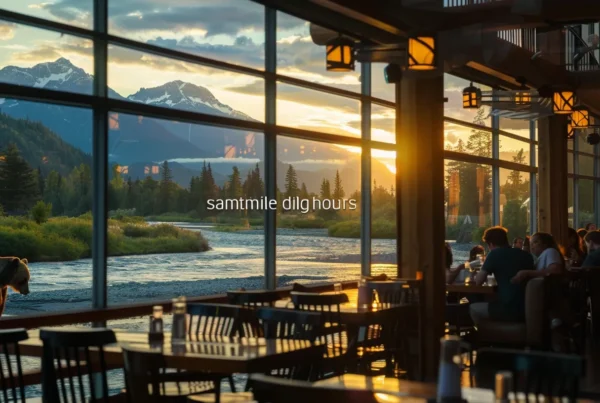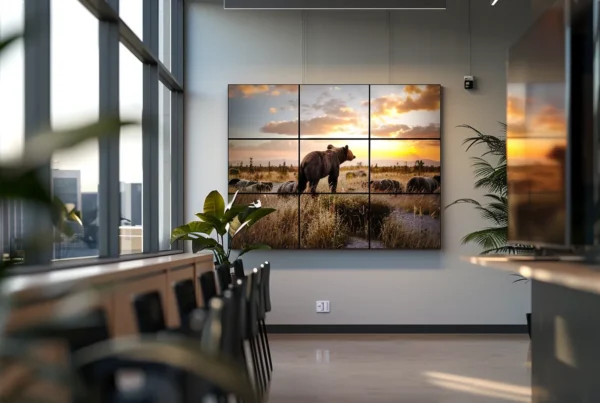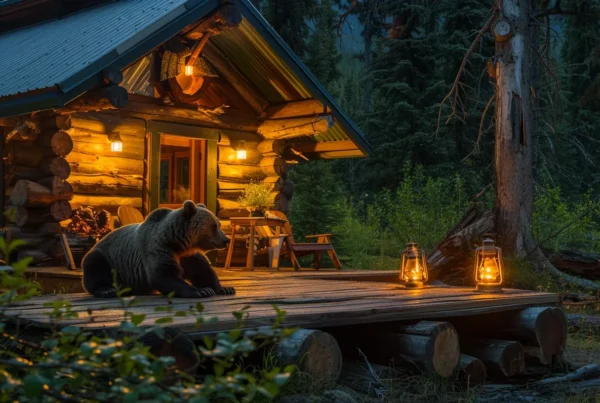
Master Bear Photography in Alaska’s Wilds
Capturing stunning bear photographs in Alaska’s wilds is a goal for many wildlife enthusiasts. Understanding bear behavior and choosing the right locations is essential for achieving this objective. This guide will cover crucial aspects such as essential gear, camera settings, and safety considerations when photographing these magnificent creatures. Readers will gain valuable insights that enhance their photography skills and ensure a safe experience in the wild. This content addresses common challenges faced by nature photographers, providing practical solutions to refine their craft and capture unforgettable images.
Key Takeaways
- Understanding bear behavior enhances photography and maximizes encounter opportunities
- Early mornings and late evenings are optimal for bear sightings in Alaska
- Using the right gear, including telephoto lenses, is essential for successful bear photography
- Ensuring safety involves maintaining a distance of at least 100 yards from bears
- Engaging local guides can improve photographic experiences through their knowledge of bear behavior
Understanding Bear Behavior for Better Photography
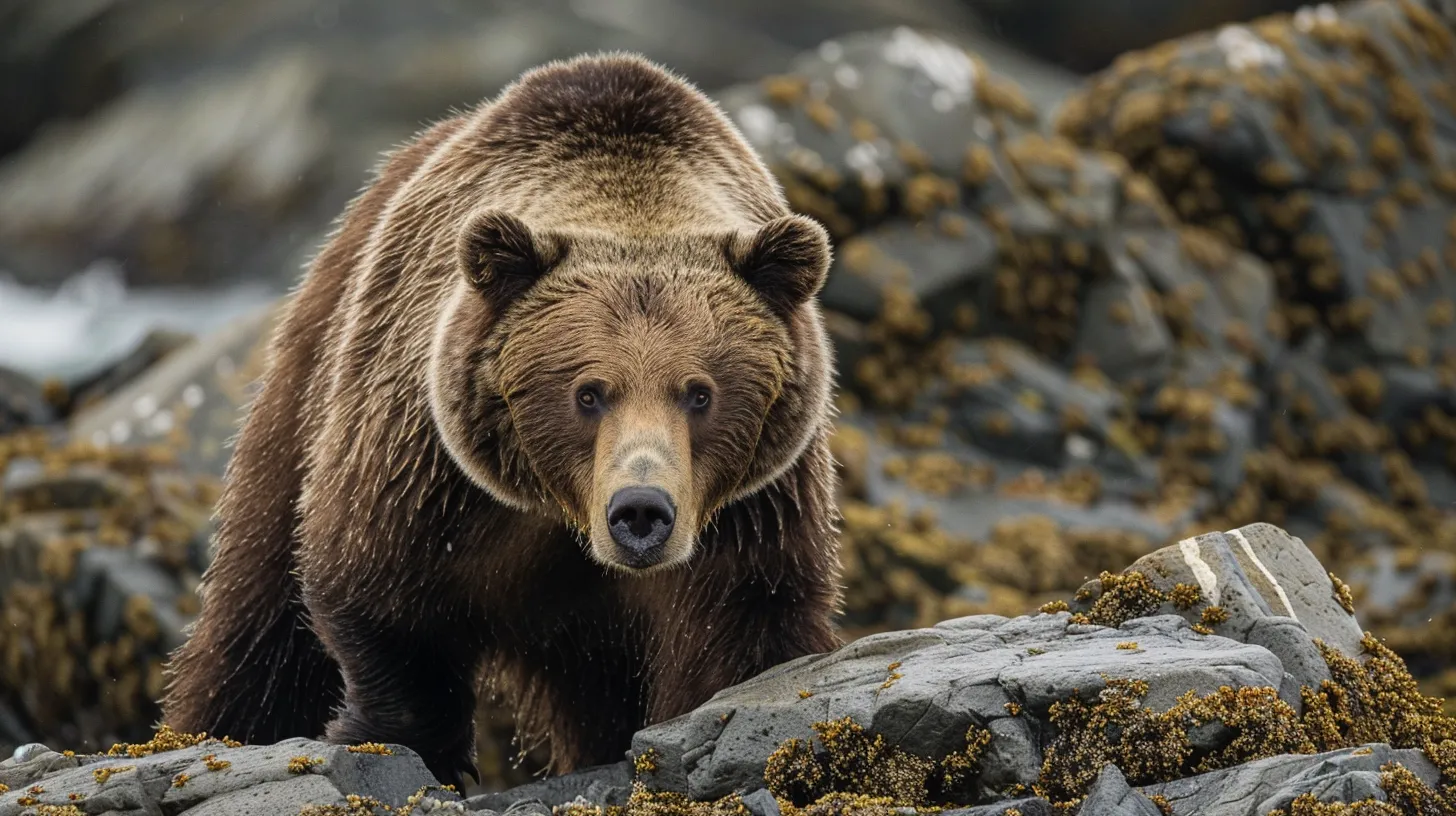
Understanding the behavior of bears in Alaska enhances bear watching alaska photography opportunities. Observing their natural habits reveals the best angles for capturing stunning images. Recognizing different bear species, such as brown and black bears, further enriches photographic storytelling. Additionally, knowing the optimal times for bear sightings, especially in Tongass National Forest, maximizes encounters, making each outing more rewarding for photographers. For ongoing tips, readers can subscribe to the newsletter.
Observing Natural Habits of Alaska’s Bears
Photographers aiming to capture stunning images of bears in Alaska must observe their natural habits closely. Locations such as the Arctic National Wildlife Refuge and Kodiak Island provide excellent opportunities to witness these majestic creatures in their environment. Understanding the behavior of brown and polar bears, including their feeding patterns and social interactions, can significantly enhance photographic results; for instance, using an appropriate shutter speed is crucial when photographing bears in motion, especially in areas like Denali during the salmon run.
Recognizing Different Bear Species in Alaska
Recognizing different bear species in Alaska is essential for photographers aiming to capture their unique behaviors and characteristics. For instance, understanding the curiosity exhibited by brown bears at the Arctic National Wildlife Refuge can lead to compelling shots, especially when they forage near coastal villages. Additionally, knowing which gear to use for varying exposure conditions will enhance photographic results, allowing for striking images that showcase each species’ distinct traits.
The Best Times for Bear Sightings
The best times for bear sightings in Alaska can significantly enhance photography experiences. Early mornings and late evenings are optimal, as bears are most active during these hours, particularly in locations like the Alaska bear camp. Photographers should consider using a monopod for stability while capturing images in varying light conditions. To receive more insights, photographers may subscribe with their email address for access to exclusive content, such as an ebook with advanced tips on bear photography.
Understanding bear behavior opens the door to better shots. Next, the right locations will put you closer to the action and promise unforgettable moments.
Choosing the Right Locations for Bear Photography
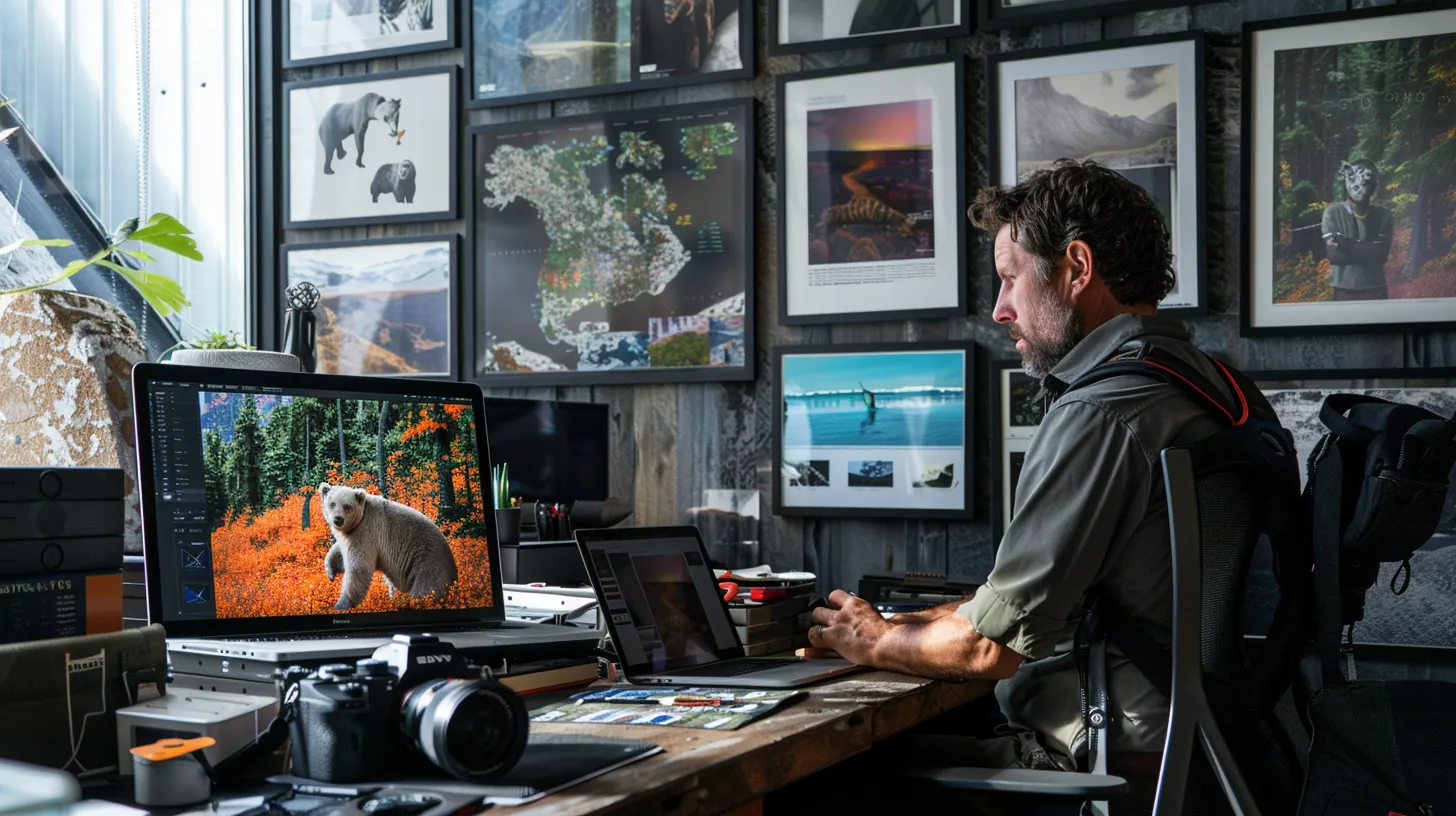
Identifying top spots in Alaska for bear photography is crucial for capturing these animals in action. Understanding essential permits and regulations ensures compliance while maximizing habitat encounters. Collaborating with local guides enhances the experience, offering insights into the best times and techniques to use, such as optimal focal length and camera settings, including those for a Nikon. Each of these aspects plays a significant role in achieving stunning visual results.
Top Spots in Alaska to Capture Bears in Action
Alaska boasts numerous prime locations for capturing stunning bear photography, with several spots standing out for their unique offerings. Areas such as Prince William Sound provide picturesque backdrops, where photographers can also glimpse whales and breathtaking snow-capped mountains. Utilizing exposure compensation techniques is vital in these varied environments to ensure bears are prominently featured against dynamic landscapes.
Essential Permits and Regulations for Wildlife Photography
When planning bear photography in Alaska, understanding essential permits and regulations is vital to ensure compliance and a positive experience. Areas like the McNeil River and various national wildlife refuges impose specific rules that photographers must follow to protect wildlife and their habitats. Carrying binoculars for better observation and being aware of local regulations regarding moose and bear interactions can enhance the experience and lead to more successful photography sessions, especially when adjusting aperture for optimal image quality in varying light conditions.
Working With Local Guides for Enhanced Experience
Engaging local guides when photographing bears in Alaska enhances the overall experience significantly. These professionals possess extensive knowledge of bear behavior and the best locations along the coast and near glaciers, allowing photographers to maximize opportunities without facing the fear of missing a crucial shot. By utilizing their expertise, photographers can access stunning landscapes and learn about the ecological dynamics of the areas they visit, which can lead to extraordinary photographic outcomes.
Finding the right spot to watch bears is only part of the journey. The right equipment transforms moments in the wild into lasting memories, and it’s time to gather what is essential for bear photography in Alaska.
Essential Gear for Bear Photography in Alaska
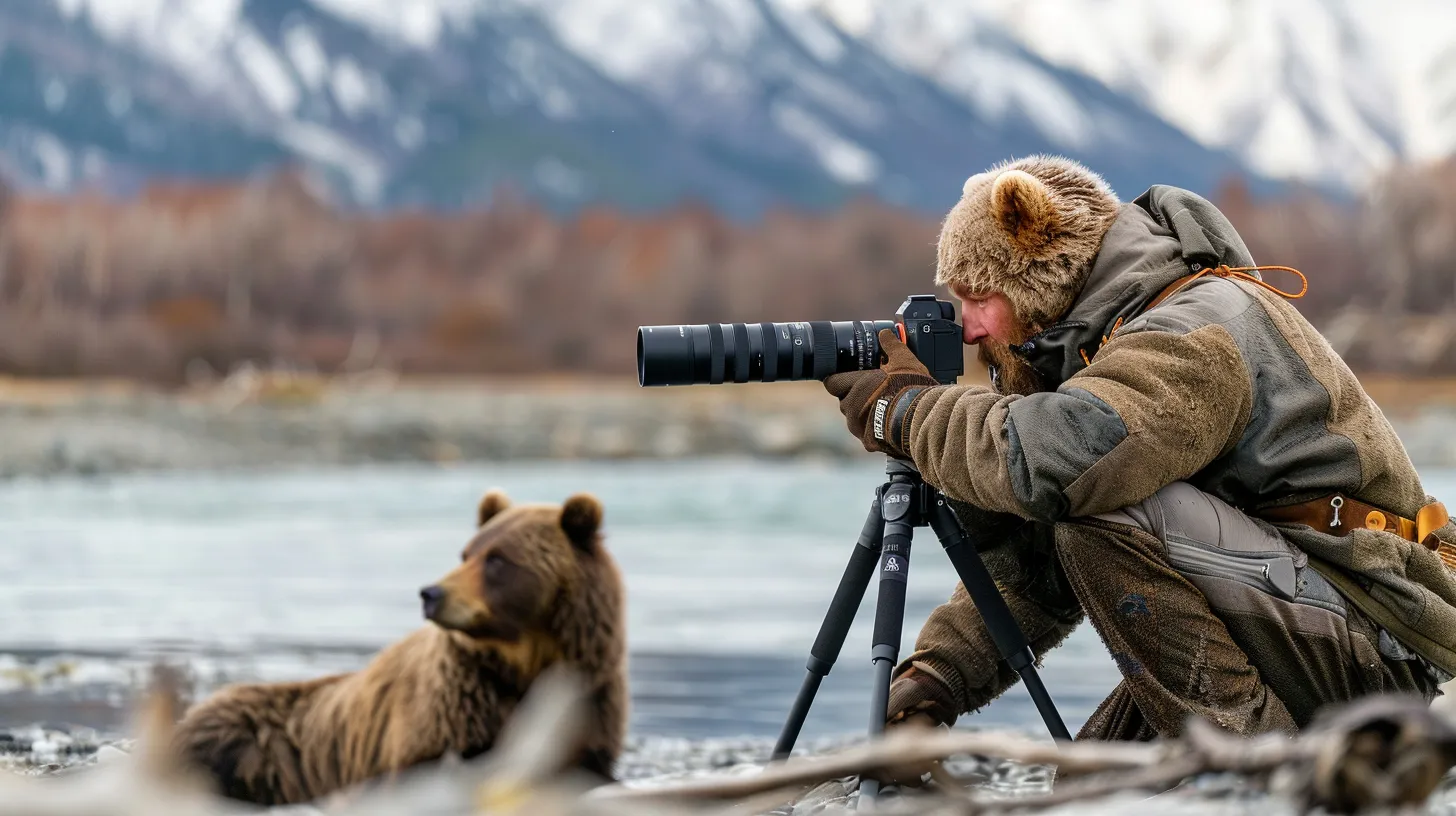
For capturing stunning images of bears in Alaska, selecting the right gear is crucial. Recommended cameras and wildlife lenses, including those that work well with a teleconverter, enable photographers to achieve high-quality shots. Proper clothing and accessories that withstand harsh weather conditions enhance comfort and safety along the Dalton Highway, allowing for intense emotional connections with the beauty of Alaska’s wildlife.
Recommended Cameras and Lenses for Wildlife Shots
Selecting the right camera and lenses is essential for anyone aiming to master bear photography in Alaska’s wilds. A robust camera body paired with a high-quality telephoto lens, such as a 300mm or 400mm, allows photographers to capture the intricate behavior of bears from a safe distance, especially during encounters at sites like Brooks Falls. Alongside these, carrying bear spray and wearing protective waders are critical for safety and comfort, enabling photographers to focus on capturing stunning images without distractions.
Accessories That Enhance Bear Photography
In the realm of nature photography, possessing the right accessories can significantly enhance the experience of capturing grizzly bears in Alaska’s wilderness. For instance, a sturdy tripod is invaluable for stabilizing shots near serene lakes on Admiralty Island, particularly during low-light conditions. Additionally, a good waterproof camera bag not only protects gear from the unpredictable Alaskan weather but also facilitates quick access for spontaneous moments. Having extra batteries and memory cards ensures that photographers do not miss opportunities, allowing for more effective documentation of these majestic creatures in their natural habitat.
Clothing and Other Equipment for Harsh Weather
Choosing the right clothing and equipment is essential for photographers braving the unpredictable weather of Alaska while capturing images of brown bears. Waterproof garments that provide insulation are critical for maintaining comfort during outdoor sessions, especially when working near rivers where fly fishing may occur. Additionally, protective gear for transportation, such as a reliable vehicle equipped with all-terrain capabilities, can ensure photographers reach prime locations without hindrance, enhancing their ability to focus on achieving the perfect depth of field in their shots.
With the right gear in hand, the real artistry begins. Mastering the camera settings will ensure each moment with Alaska’s bears is captured in vivid detail.
Camera Settings for Capturing Alaskan Bears
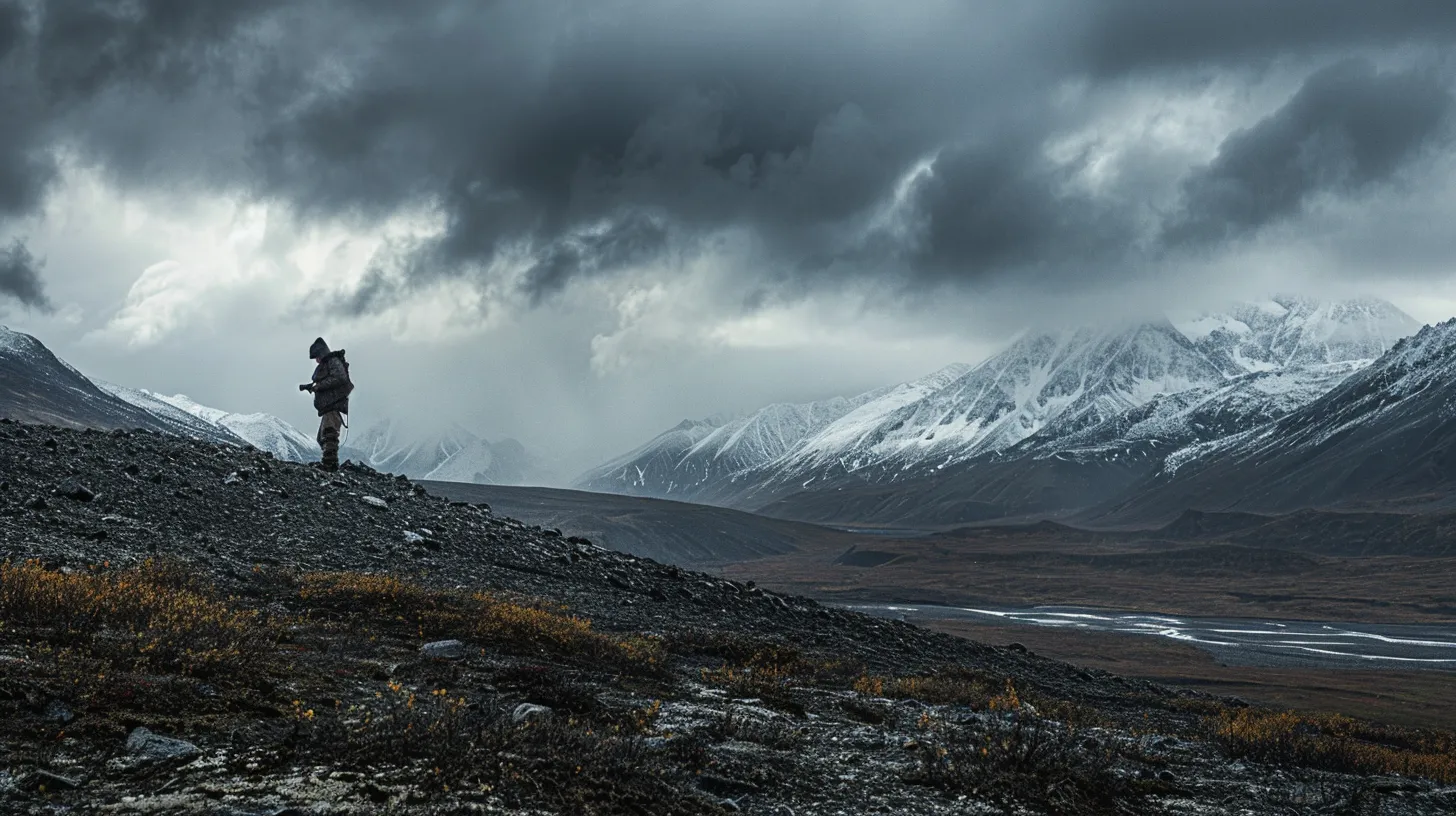
Adjusting ISO, aperture, and shutter speed is crucial for capturing the majestic bears of the Alaska Range, especially in varied lighting conditions. Photographers should also focus on techniques for moving bears to ensure sharp images during action moments. Utilizing burst mode can enhance opportunities for dynamic shots, particularly in areas like the Brooks Range or South Georgia, where wildlife activity is intense.
Adjusting ISO, Aperture, and Shutter Speed for Wildlife
Adjusting ISO, aperture, and shutter speed is essential for photographers aiming to capture wildlife, particularly bears during the salmon run. A higher ISO allows for better performance in low light, while a wide aperture produces a shallow depth of field, beautifully isolating the subject. Using a fast shutter speed is crucial for freezing action, especially when bears are in motion, ensuring that autofocus systems can effectively track the wildlife without motion blur, resulting in sharp and compelling images.
Focusing Techniques for Moving Bears
Focusing on moving bears requires precise techniques to ensure sharp images during dynamic moments. Utilizing continuous autofocus mode allows the camera to track the subject as it moves across the frame, which is particularly useful in landscape photography settings where bears may traverse unpredictable terrains. Additionally, selecting a focus point that remains on the bear will help maintain clarity, especially during fast-paced action, enhancing the overall impact of the captured images.
Utilizing Burst Mode for Action Shots
Utilizing burst mode is essential for capturing dynamic action shots of bears in Alaska’s wilds. This setting allows photographers to take multiple frames in quick succession, increasing the chances of freezing that perfect moment, whether a bear is catching fish or playing with its cubs. By keeping the camera steady and using burst mode, photographers can achieve sharp images that convey the intensity and movement of these majestic animals in their natural habitat.
Setting the right camera is just the beginning. Next, discover how to frame these magnificent creatures for images that tell their story.
Tips for Composing Stunning Bear Photographs
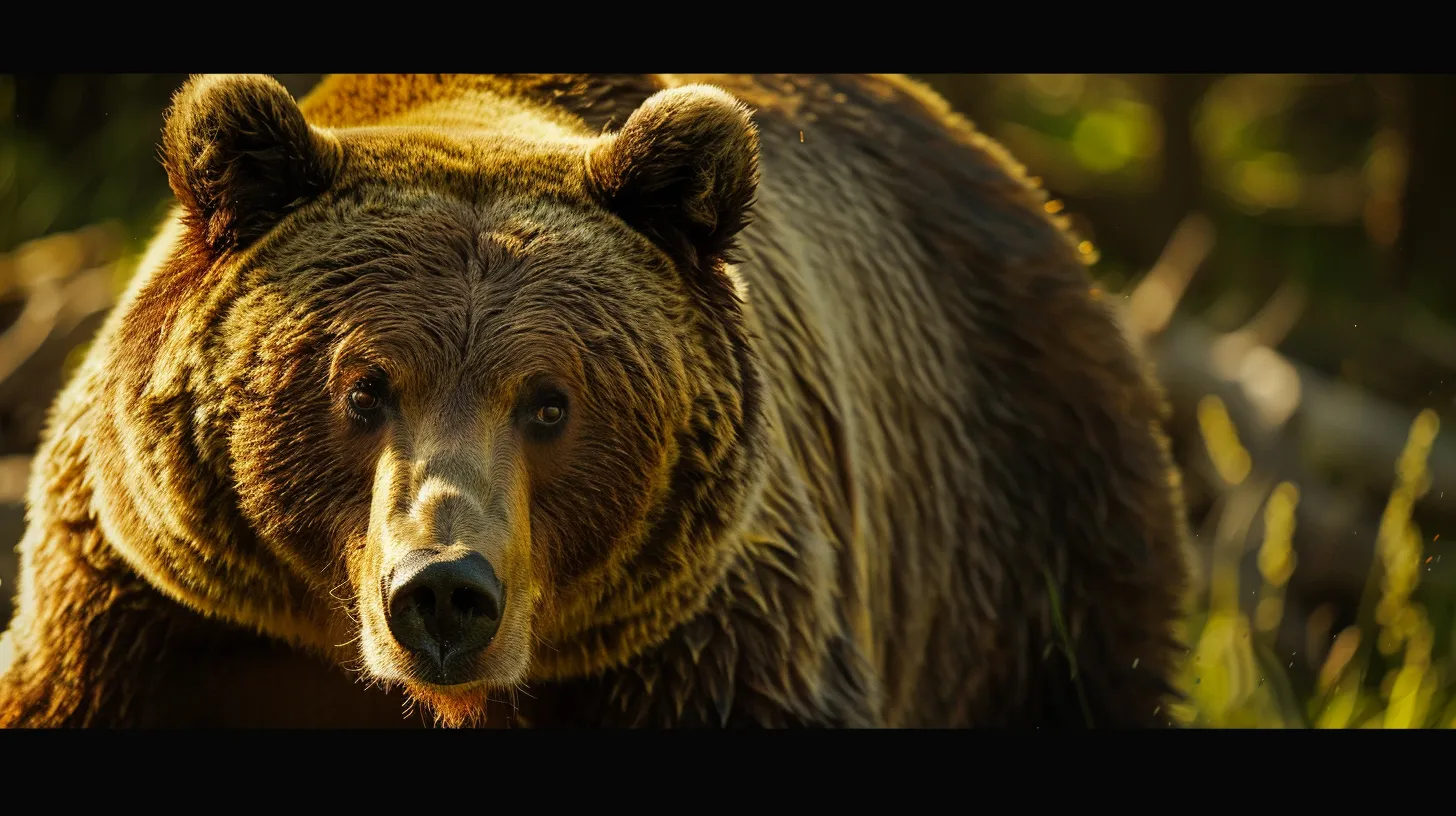
Building impactful compositions with bears requires photographers to consider creative angles and unique perspectives that showcase these majestic animals. The importance of background and lighting cannot be overstated, as they play a vital role in enhancing the overall image quality. Each of these elements contributes to creating stunning photographs that capture the essence of Alaska’s wildlife.
Building Impactful Compositions With Bears
Building impactful compositions with bears involves careful consideration of framing and background elements. Photographers should aim to utilize natural features such as trees, rivers, or mountains to enhance the visual storytelling of their images. By positioning the bear off-center and employing the rule of thirds, photographers can create a sense of movement and connection to the surrounding environment, leading to more engaging photographs that truly capture the essence of Alaska’s wilds.
Creative Angles and Perspectives to Try
Experimenting with creative angles and perspectives can transform bear photographs into captivating visual narratives. For instance, getting down low to the ground can provide a dramatic viewpoint, emphasizing the bear’s size and connection to its environment. Additionally, photographing from an elevated position, such as a hillside, allows for unique compositions that showcase bears within expansive landscapes, providing context to their habitat.
The Importance of Background and Lighting
Effective bear photography in Alaska hinges significantly on background and lighting choices. Photographers should prioritize natural settings, such as forests or rivers, which not only enhance the bear’s presence but also tell a compelling story. Utilizing soft, diffused lighting during the golden hours of dawn and dusk enriches the colors of the scene, elevating the overall quality of the images and making the bears stand out against their environment.
Capturing a bear in its wild beauty is thrilling, but it carries risks that demand respect. Knowing the boundaries is key to enjoying this adventure safely and responsibly.
Safety Considerations When Photographing Bears
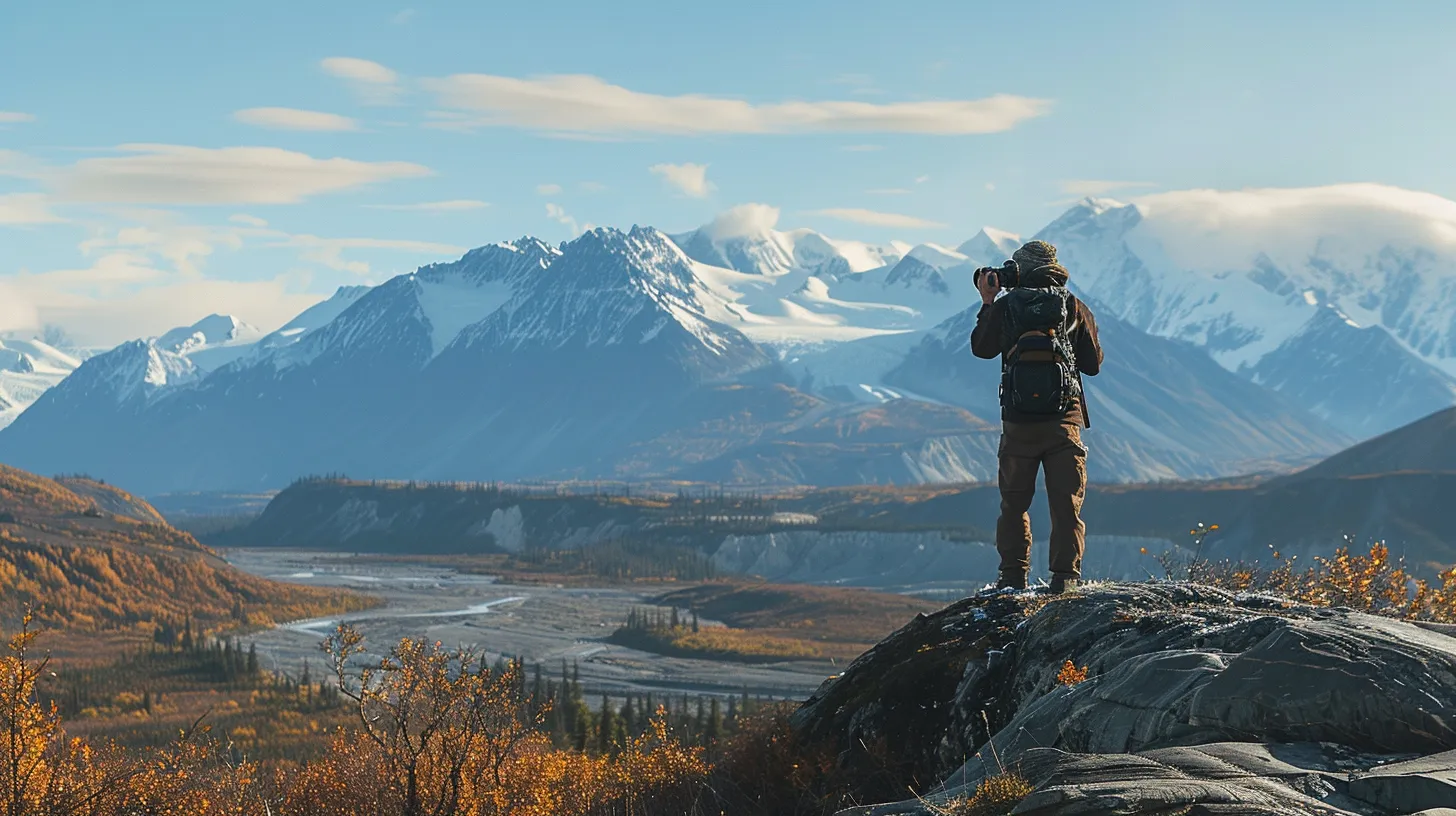
Understanding bear safety protocols is critical for photographers venturing into Alaska’s wilds. This includes recognizing the distinction between photography and proximity, ensuring that a safe distance is maintained at all times. Utilizing equipment, such as a telephoto lens, helps maintain safety while effectively capturing the beauty of these animals. Each of these aspects will be explored further to enhance the photographer’s safety and experience.
Understanding Bear Safety Protocols
Photographers venturing into the wilds of Alaska must prioritize safety when encountering bears. Maintaining a minimum distance of 100 yards is essential to avoid startling these powerful animals and ensure a safe experience. Utilizing a telephoto lens not only allows for capturing stunning images but also enables a safe gap, enabling photographers to focus on obtaining the best shots while minimizing risks associated with close encounters.
The Distinction Between Photography and Proximity
Understanding the distinction between photography and proximity is essential for safety when capturing images of bears in Alaska. Photographers must maintain a safe distance, typically at least 100 yards, to avoid startling these powerful animals while still achieving stunning shots. Using long lenses allows photographers to capture the bear’s actions without intruding on its natural behavior, ensuring both safety and high-quality images in the wild.
Using Equipment to Maintain Safe Distances
Utilizing the right equipment is vital for photographers aiming to maintain safe distances while capturing bears in Alaska. By using a high-quality telephoto lens, shooters can frame stunning images from a secure viewpoint, ensuring they remain at least 100 yards away from these powerful animals. This not only protects the wildlife but also allows photographers to obtain detailed shots without disrupting the bears’ natural behavior, ultimately leading to more rewarding photography experiences.
Conclusion
Mastering bear photography in Alaska’s wilds provides photographers with unparalleled opportunities to capture the majesty of these remarkable animals. By understanding bear behavior, selecting the right locations, and utilizing appropriate gear, photographers enhance their chances of obtaining stunning images. Safety protocols are crucial, ensuring that both the photographer and the bears remain protected during encounters. Recognizing the importance of timing, composition, and technique ultimately leads to powerful visual storytelling and lasting memories of Alaska’s rich wildlife.

